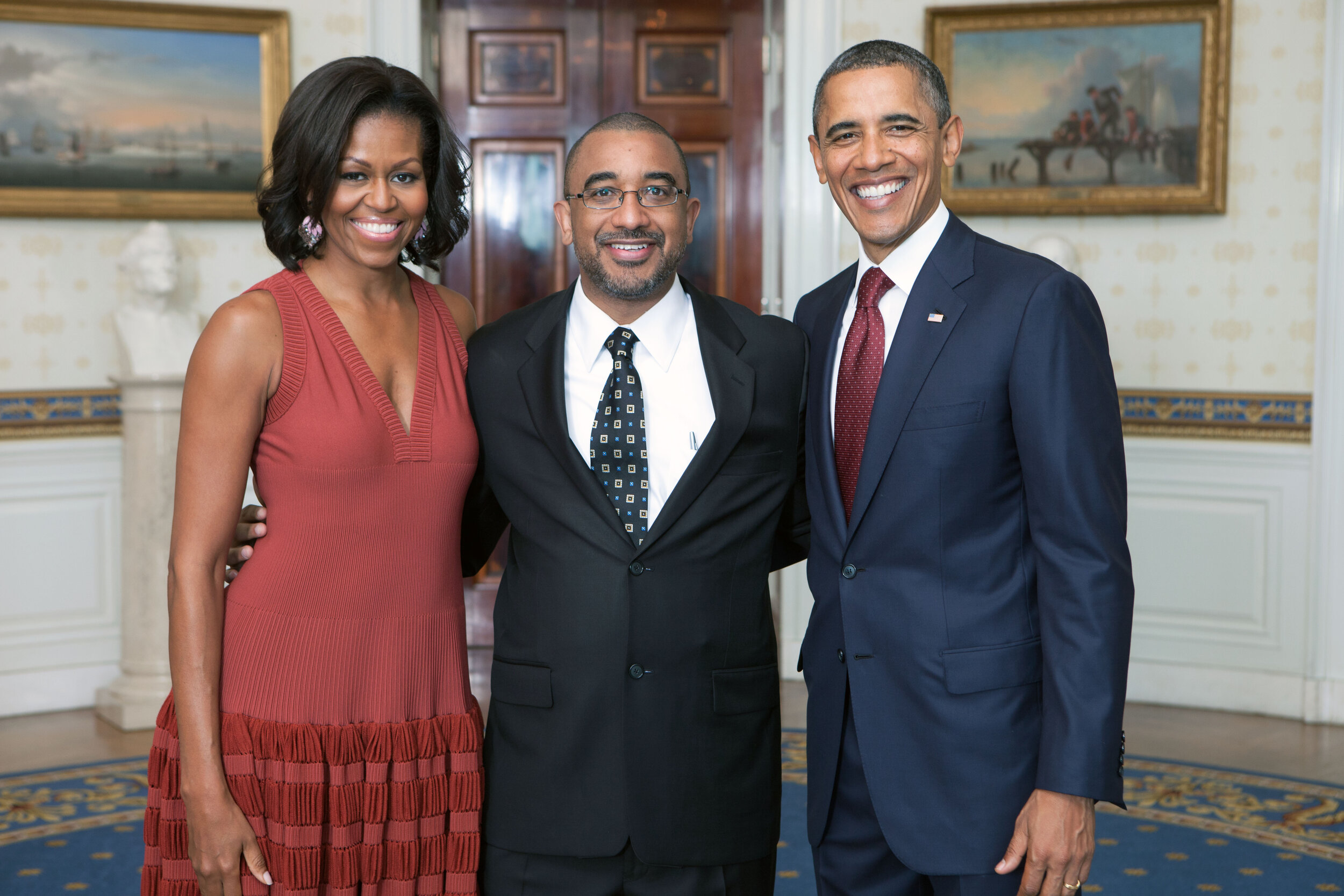A Grassroots, Collaborative Approach to Education Sets ELP Apart
With President and Mrs. Obama at a White House luncheon following the opening of the Martin Luther King, Jr. Memorial in 2011
“ELP is the realization of the best in education.”
That is high praise coming from an anthropologist by training who has long worked at the intersection of philanthropy and education. But Robert Adams is not one to mince words. As soon as Robert heard about ELP, he knew the ELP team and its stakeholders were creating something special.
During the past 15 years or so, Robert pointed out that blame for educational shortcomings has been piled on educators. “The system has been underfunded, and it has failed to provide the support required for educators to thrive. You have to have real grit to stay in education. And even folks who stay get burned out. ELP understands that this is a hard job, which is why its program provides support directly to new teachers.”
Robert’s work around the world provided entry into education. “I was on a project from 2000 - 2003 that was a comparative study of education reform in five countries: Brazil, South Africa, Nicaragua, Mexico and the US. That was my entry into education from a research and philanthropy perspective.” From there, he went to the Fetzer Institute in Kalamazoo, MI and then to the National Education Association (NEA) Foundation, where he met Dan Burkhalter, ELP’s executive director. When Dan asked Robert for fundraising advice, Robert was immediately on board.
NEAF Global Fellows School Visit to United Church School, Johannesburg South Africa 2018
ELP starts with educators in the classroom
“ELP starts with the people at the grassroots - the educators who are in the classroom,” Robert explained. “So many policy solutions are imposed by people on the outside who don’t know the ‘ground truth’. This project brings together the wisdom of the ground truth and the entrepreneurial spirit of innovation. We need both if we want to serve our students.”
As you might imagine, Robert has seen many flavors of teacher support initiatives and programs over the years. Few take on the real challenges that are facing the education system. ELP does not shy away from those challenges. One challenge is the chronic labor shortage, and another is retaining educators once they are in the system. Providing support to educators during the early years - the hardest years of teaching - is critical.
“While I was at the NEA Foundation, we served 3 million educator members,” Robert said. “I learned that the best teachers take 5 - 10 years to master their craft. It proves the 10,000-hour rule from Malcolm Gladwell that time spent on an activity does make a difference.”
And ELP is coming along at the right time to make a substantial difference in the future of education. As Robert pointed out, “We are coming out of the pandemic, and people are looking for innovative solutions to long-standing problems. Meanwhile, there’s been a complete collapse in education reform policy. It was focused on numbers and punishing schools, but that competitive marketplace approach just doesn’t work. ELP is one of the few initiatives saying, Let’s move forward and innovate during this period. Let’s support educators, who are invested in the future of the field and in their students’ outcomes. That optimistic, lean-into-the-future-despite-the-big-challenges perspective makes ELP an exciting program to be involved with.”
Taken at the Long Walk to Freedom: The South African Embassy in Washington, DC
The future is bright
Looking ahead, Robert sees a bright future for ELP. He firmly believes people will look to ELP as an example of a tried-and-true tool that leads to better outcomes for students, retains educators and saves districts money (it’s expensive to keep turning over the educator pool).
But this cannot be done in a vacuum. ELP is a collaborative effort among teacher unions, local union chapters, school districts and various stakeholders, including philanthropists. Robert’s message to his fellow philanthropists is simple: “Do nothing without us. Educators have a lot of wisdom to share. Plus, a program is more powerful when you collaborate than when you try to impose something on a community. ELP has made a table big enough where every voice can be heard and contribute to success.”
The success of grassroots programs like ELP could potentially lead to bigger changes in the education system. “Part of the challenge historically is that this is a field made up primarily of people of color and women,” Robert noted. “Biases and wage disparities have been inherent in the system and actual practice for decades. But education cannot be a bedrock of democratic citizenship if schools are starved of the necessary tools and support they need to be world-class. We keep trying to rob the system and expect great outcomes. My father used to say, ‘You can run with the buzzards or soar with the eagles, but you can’t do both.’”
Help us lead this change! To learn more about funding opportunities with ELP, please email us at info@educatorsleadingtheprofession.org.



